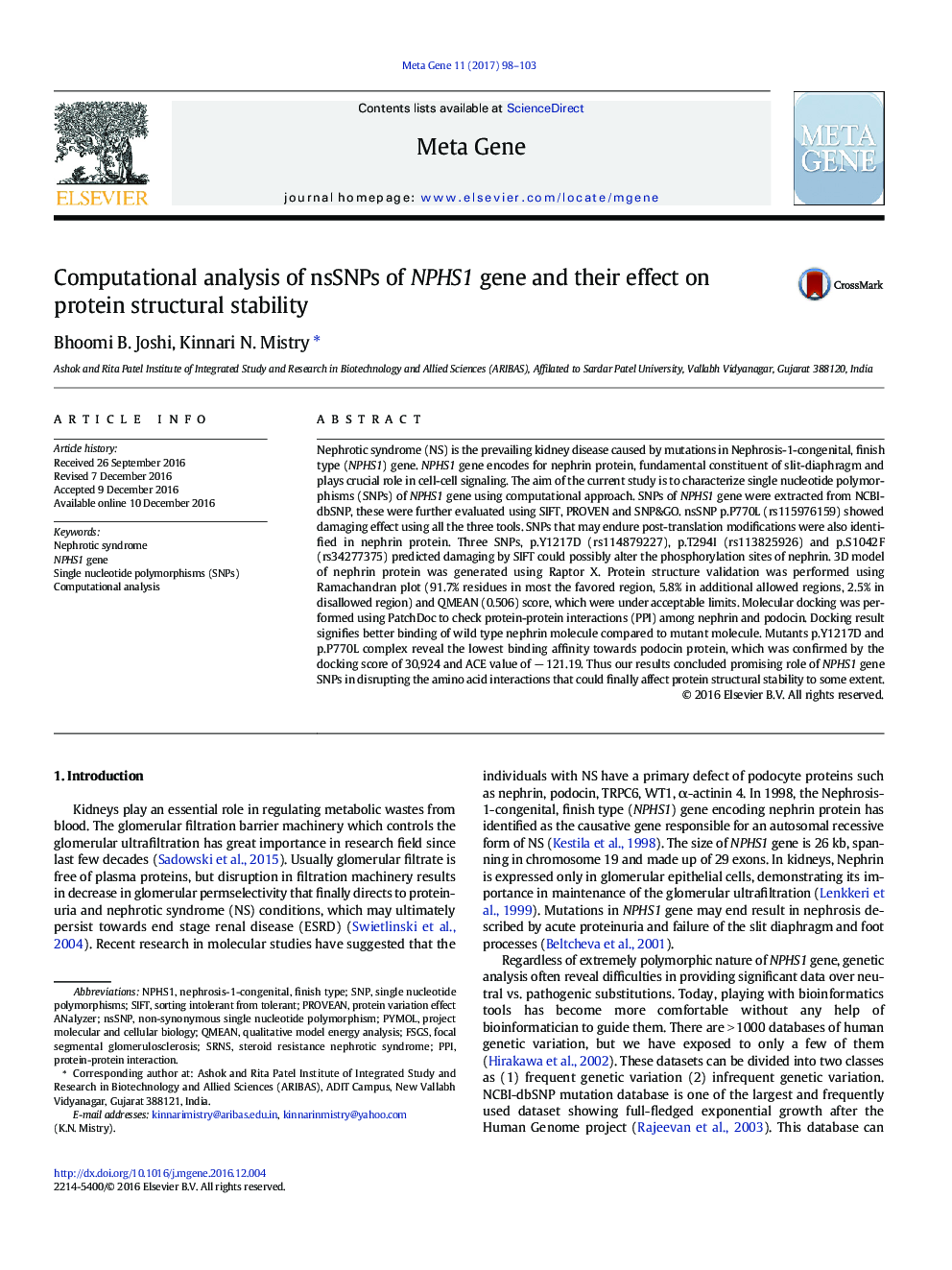| Article ID | Journal | Published Year | Pages | File Type |
|---|---|---|---|---|
| 5518372 | Meta Gene | 2017 | 6 Pages |
â¢Comparative analysis predicted nsSNP, P770L of NPHS1 gene to be damaging with a score of 0.03.â¢Structural analysis predicted nsSNPs, Y1217D, T294I and S1042F could possibly alter the phosphorylation sites of nephrin.â¢Docking analysis of wild type against mutant revealed the poor interaction of nephrin with podocin protein.
Nephrotic syndrome (NS) is the prevailing kidney disease caused by mutations in Nephrosis-1-congenital, finish type (NPHS1) gene. NPHS1 gene encodes for nephrin protein, fundamental constituent of slit-diaphragm and plays crucial role in cell-cell signaling. The aim of the current study is to characterize single nucleotide polymorphisms (SNPs) of NPHS1 gene using computational approach. SNPs of NPHS1 gene were extracted from NCBI-dbSNP, these were further evaluated using SIFT, PROVEN and SNP&GO. nsSNP p.P770L (rs115976159) showed damaging effect using all the three tools. SNPs that may endure post-translation modifications were also identified in nephrin protein. Three SNPs, p.Y1217D (rs114879227), p.T294I (rs113825926) and p.S1042F (rs34277375) predicted damaging by SIFT could possibly alter the phosphorylation sites of nephrin. 3D model of nephrin protein was generated using Raptor X. Protein structure validation was performed using Ramachandran plot (91.7% residues in most the favored region, 5.8% in additional allowed regions, 2.5% in disallowed region) and QMEAN (0.506) score, which were under acceptable limits. Molecular docking was performed using PatchDoc to check protein-protein interactions (PPI) among nephrin and podocin. Docking result signifies better binding of wild type nephrin molecule compared to mutant molecule. Mutants p.Y1217D and p.P770L complex reveal the lowest binding affinity towards podocin protein, which was confirmed by the docking score of 30,924 and ACE value of â 121.19. Thus our results concluded promising role of NPHS1 gene SNPs in disrupting the amino acid interactions that could finally affect protein structural stability to some extent.
